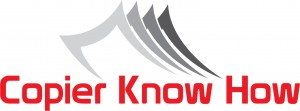Can a Better Printing Procurement Policy Save the NHS Money?
Across the entire NHS, more than a billion pounds is spent on administrative services, including printing, each year. With the organisation looking to save money on a grand scale and improve the way they operate, a more focused printing procurement policy could make a small but significant impact. It may not solve the major problems the NHS faces today but it could contribute to improving productivity, admin practices and reduce those all-important costs.
Printing services have been working with the NHS at various levels to deliver better productivity and lowering costs over the years, particularly with the new range of eco-friendly MFPs on the market. Copier giant Xerox are currently working with University College London Hospitals NHS Foundation Trust to find over £1 million in savings over 7 years. The project is a massive undertaking with as many as 7,000 different sites across the Trust to take into account with the possible replacement of some 3,000 printers for more cost effective and eco-friendly devices.
Replacing Old Devices
The simple act of replacing old, worn out printers can save an organisation like the NHS a large amount of money. Not only do they have more functionality but they use less energy and have smart programmes that, for instance, can reduce the amount of power used. Print managers can decide what documents are printed or stored digitally and keep greater control across several machines.
Embracing New Ways of Working
Modern print technology can lead to new and more productive ways of working. With the latest multi-function printers you can choose whether to print or send to a mobile device such as a smartphone or tablet. That means you cut down on the amount of paper you use and create a strategy where people think twice before they print something in hardcopy. Remote management of new systems also allows for better control of consumables such as paper and toner as well as ensuring that maintenance is kept up-to-date, reducing downtime.
Staying On Top of the Costs
Because they are such big organisations, NHS trusts often have difficulty keeping control of the overall costs. This is because they have smaller units spread over large areas which have different management systems for print that remain unintegrated. Staff often have their own printers which are either outdated or poorly maintained, with the additional need for IT departments to spend significant amounts of time servicing equipment to keep things going. With a complete printing solution that is managed centrally, NHS trusts will be able to monitor usage, develop new ways of working and maintainequipment better across the board.
Undertaking a Print Review
Whilst improving print services across the NHS is a drop in the ocean compared to the overall savings that need to be made, significant improvements in the technology employed and how it is used can produce valuable financial benefits. The first stage of this for any trust will be to undertake a complete audit of how printing is used at the present time. Solutions can then be found, new, more efficient, equipment installed, and processes standardised across departments to deliver real savings.
